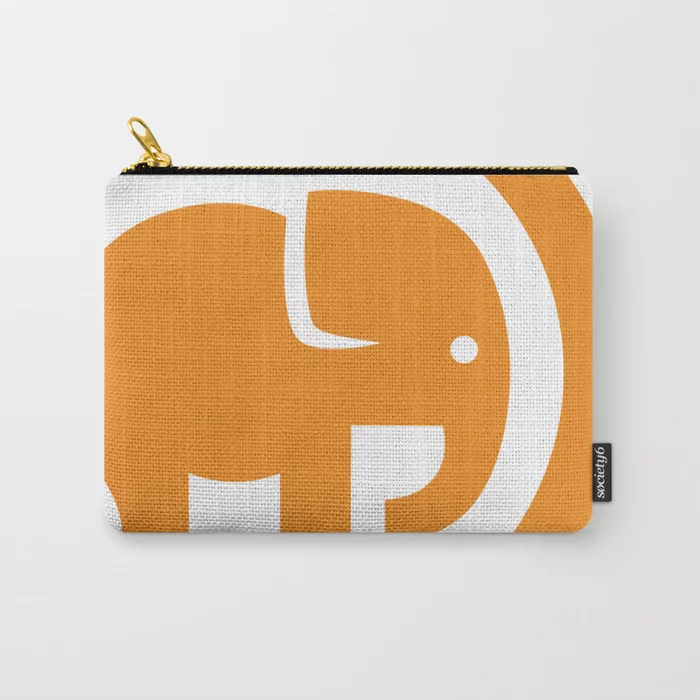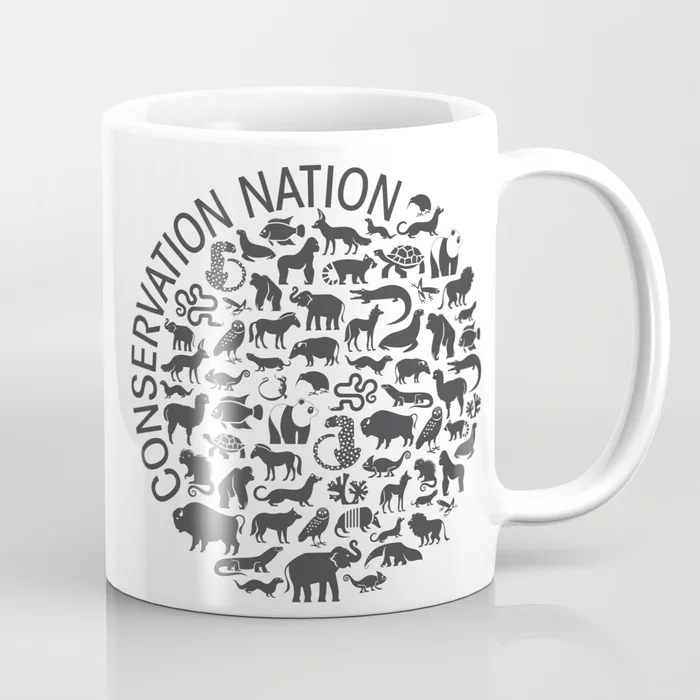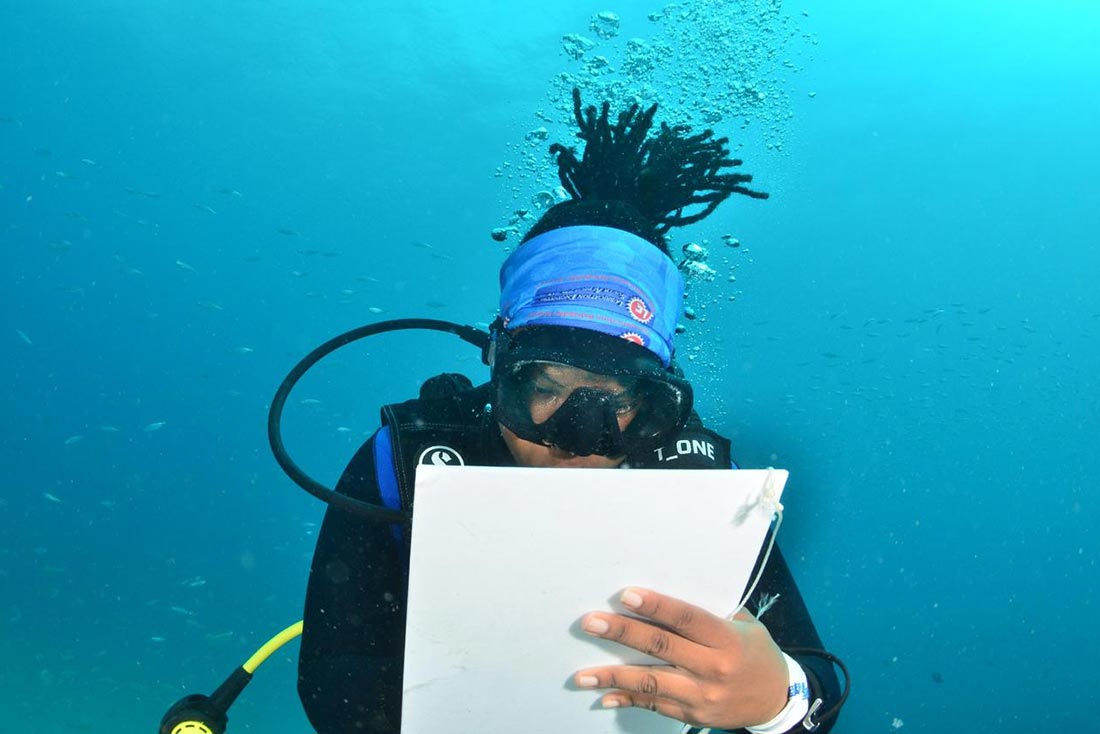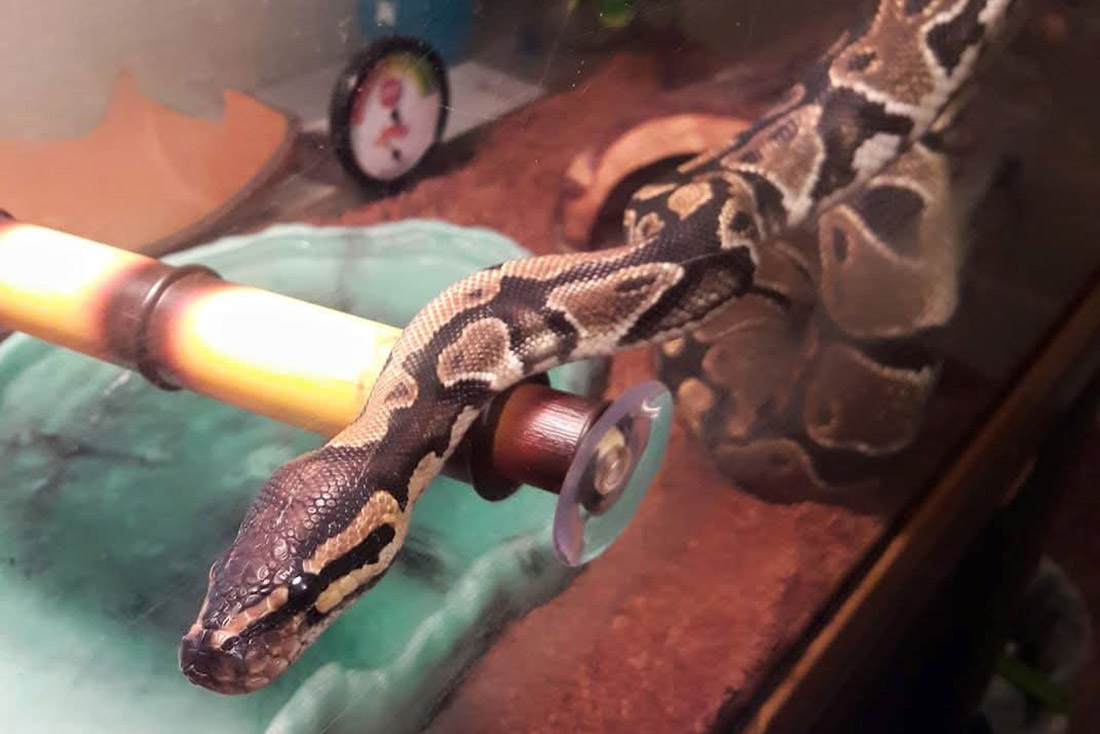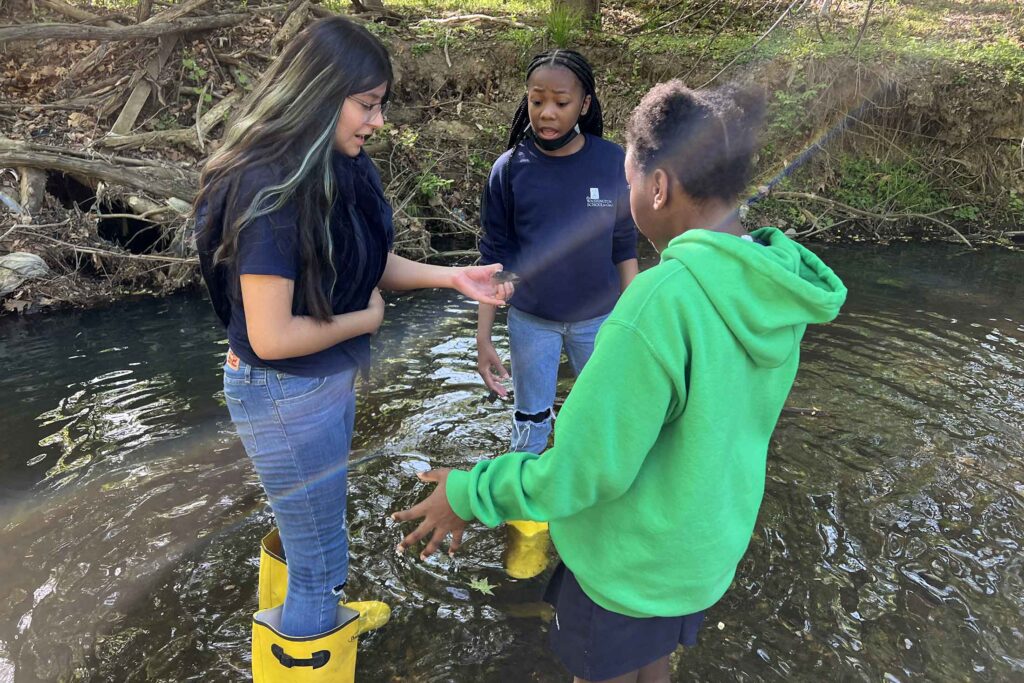Conservation Nation wants all girls to have the confidence to see themselves as conservation champions, all the way up to pursuing STEM academic and career paths into the field. At The Washington School for Girls, our very first Conservation Nation Academy club pilot program in spring 2023 was a resounding success in connecting middle school girls with counter-stereotypical role models in conservation science. The girls enjoyed exploring science and nature, and they are already looking forward to expanding the club next year. Here are some highlights:
The girls enjoyed exploring nature along Oxon Run stream, right next to the school! We brought binoculars and nature journals for the girls, and they enjoyed writing, drawing, observing, exploring, and just relaxing together in nature.
After we discussed the concepts of energy conservation and efficiency, we showed the girls how to use energy tools such as watt meters and light meters to measure electricity use in the school. The girls enjoyed using these tools and taking turns leading demonstrations on energy efficiency!
We brought seeds, soil, and grow lights for the girls to grow kale and Swiss chard for Liz, their bearded dragon class pet.
On a rainy day, the girls had fun learning about the pH scale and testing different samples of water from the stream and school.
We facilitated a partnership with the Ward 8 Water Watchers program through which Lauren Parker and Quiana Newby from The Green Scheme brought boots and helped the girls learn about, explore, and clean up the stream.
The girls overcame fears and spent time getting comfortable in and around the water as we explored Oxon Run. They saw lots of trash and noticed dramatic erosion along the stream banks. We also found some dead fish that they were very curious about.
In one session, the girls removed three large bags of trash as well as some large items like this tire. They also enjoyed looking for fish and tadpoles in the water and creek critters under rocks.
We taught the girls how to make recycled paper from old newspapers. Some girls added wildflower seeds to their paper and experimented with adding food dye to make blue paper. It was fun to closely observe the paper afterwards!
We helped the girls set up several food compost bins using red wiggler worms. After enjoying a snack of oranges and strawberries, the girls prepared and mixed the ingredients being careful to add a proper mix of greens (for nitrogen) and browns (for carbon.) We then created labels and added the worms, and the girls did a fantastic job of maintaining the bins until the compost was ready to harvest. They were excited to find baby worms as the weeks passed!
After one of the girls asked if we could dissect fish, we reached out to Dr. Patricia Hernandez, a professor and scientist from George Washington University, who brought us sharks, stingrays, lampreys, and other amazing fish to dissect. It did not take long for the girls to get comfortable with the dissection. We definitely had some future scientists and surgeons in this group of students!
We are looking forward to expanding this club in the 2023-2024 school year and creating memorable nature experiences for even more girls.
Conservation Nation wants all girls to have the confidence to see themselves as conservation champions, all the way up to pursuing STEM academic and career paths into the field. At The Washington School for Girls, our very first Conservation Nation Club pilot program in spring 2023 was a resounding success in connecting middle school girls with counter-stereotypical role models in conservation science. The girls enjoyed exploring science and nature, and they are already looking forward to expanding the club next year. Here are some highlights:
We were fortunate to have a visit from author and National Geographic Explorer, Gabby Salazar. After video-interviewing a few girls for a Conservation Nation project, Gabby joined our club, talked about her work, and gifted each girl with an autographed copy of her book, No Boundaries: 25 Women Explorers and Scientists Share Adventures, Inspiration, and Advice.
The girls enjoyed exploring nature along Oxon Run stream, right next to the school! We brought binoculars and nature journals for the girls, and they enjoyed writing, drawing, observing, exploring, and just relaxing together in nature.
After we discussed the concepts of energy conservation and efficiency, we showed the girls how to use energy tools such as watt meters and light meters to measure electricity use in the school. The girls enjoyed using these tools and taking turns leading demonstrations on energy efficiency!
We brought seeds, soil, and grow lights for the girls to grow kale and Swiss chard for Liz, their bearded dragon class pet.
On a rainy day, the girls had fun learning about the pH scale and testing different samples of water from the stream and school.
We facilitated a partnership with the Ward 8 Water Watchers program through which Quiana Newby and Lauren Parker from The Green Scheme brought boots and helped the girls learn about, explore, and clean up the stream.
The girls overcame fears and spent time getting comfortable in and around the water as we explored Oxon Run. They saw lots of trash and noticed dramatic erosion along the stream banks. We also found some dead fish that they were very curious about.
In one session, the girls removed three large bags of trash as well as some large items like this tire. They also enjoyed looking for fish and tadpoles in the water and creek critters under rocks.
We taught the girls how to make recycled paper from old newspapers. Some girls added wildflower seeds to their paper and experimented with adding food dye to make blue paper. It was fun to closely observe the paper afterwards!
We helped the girls set up several food compost bins using red wiggler worms. After enjoying a snack of oranges and strawberries, the girls prepared and mixed the ingredients being careful to add a proper mix of greens (for nitrogen) and browns (for carbon.) We then created labels and added the worms, and the girls did a fantastic job of maintaining the bins until the compost was ready to harvest. They were excited to find baby worms as the weeks passed!



